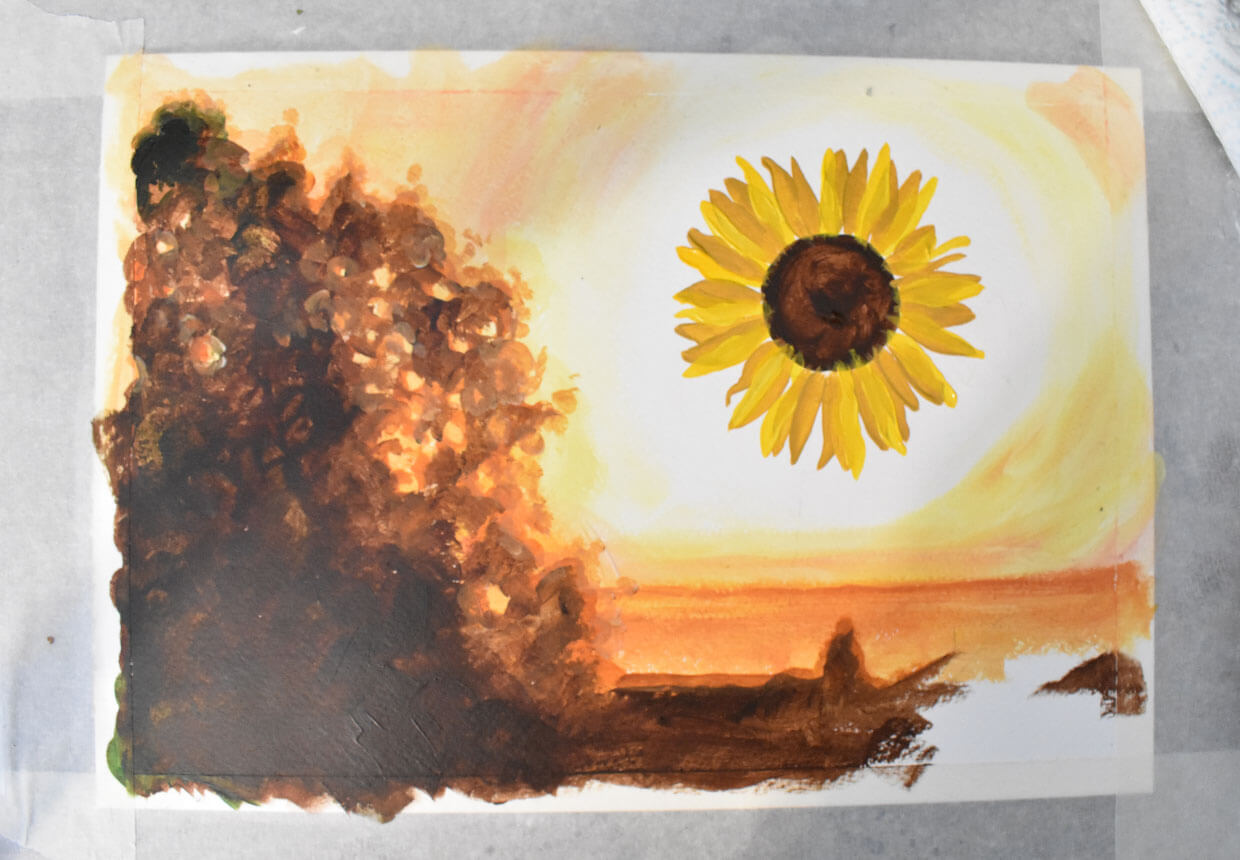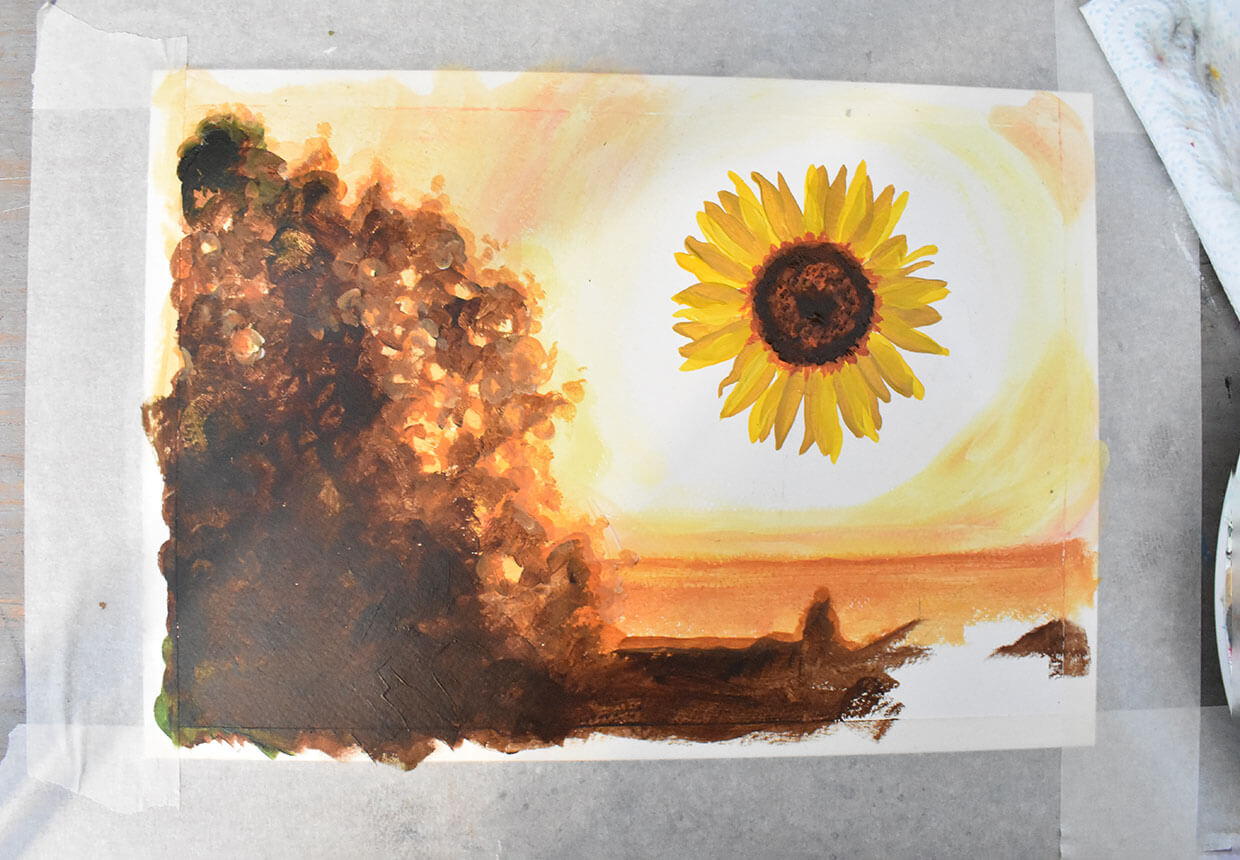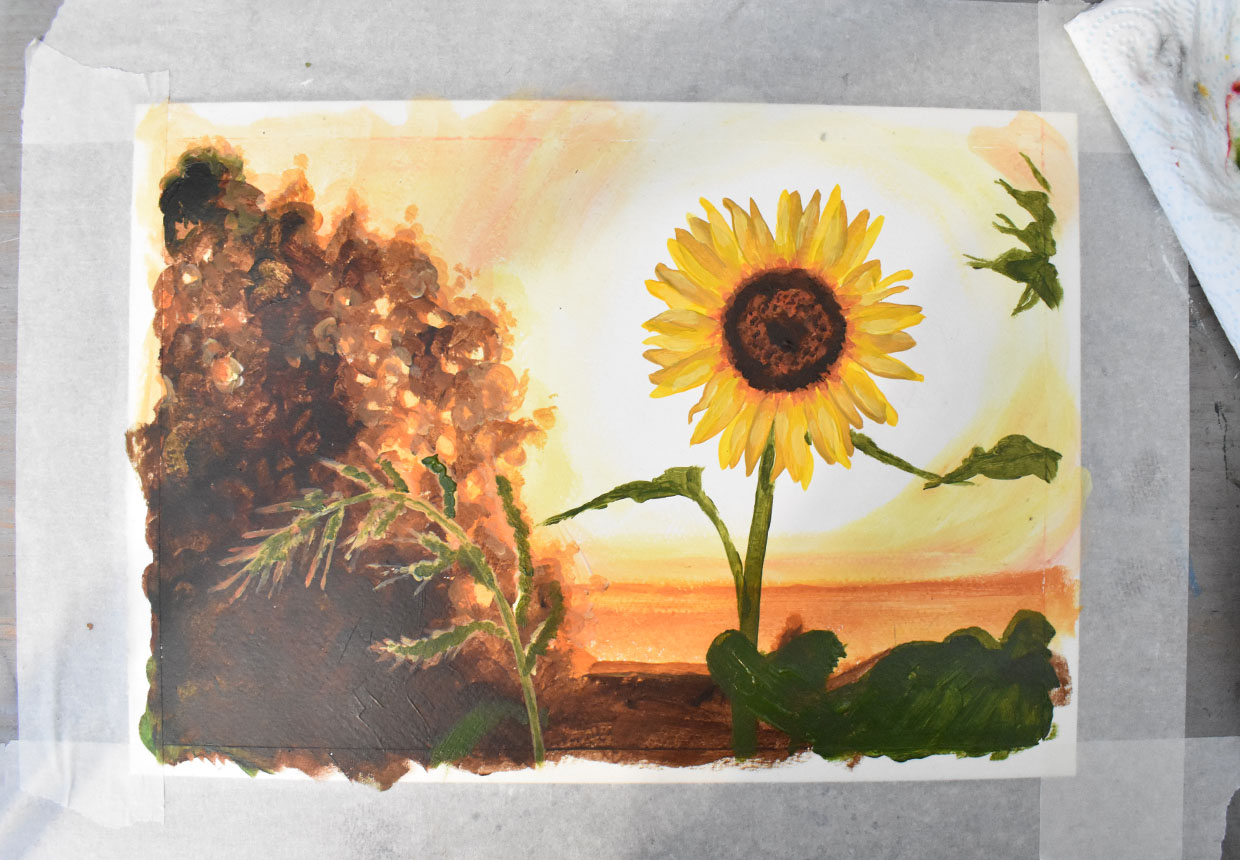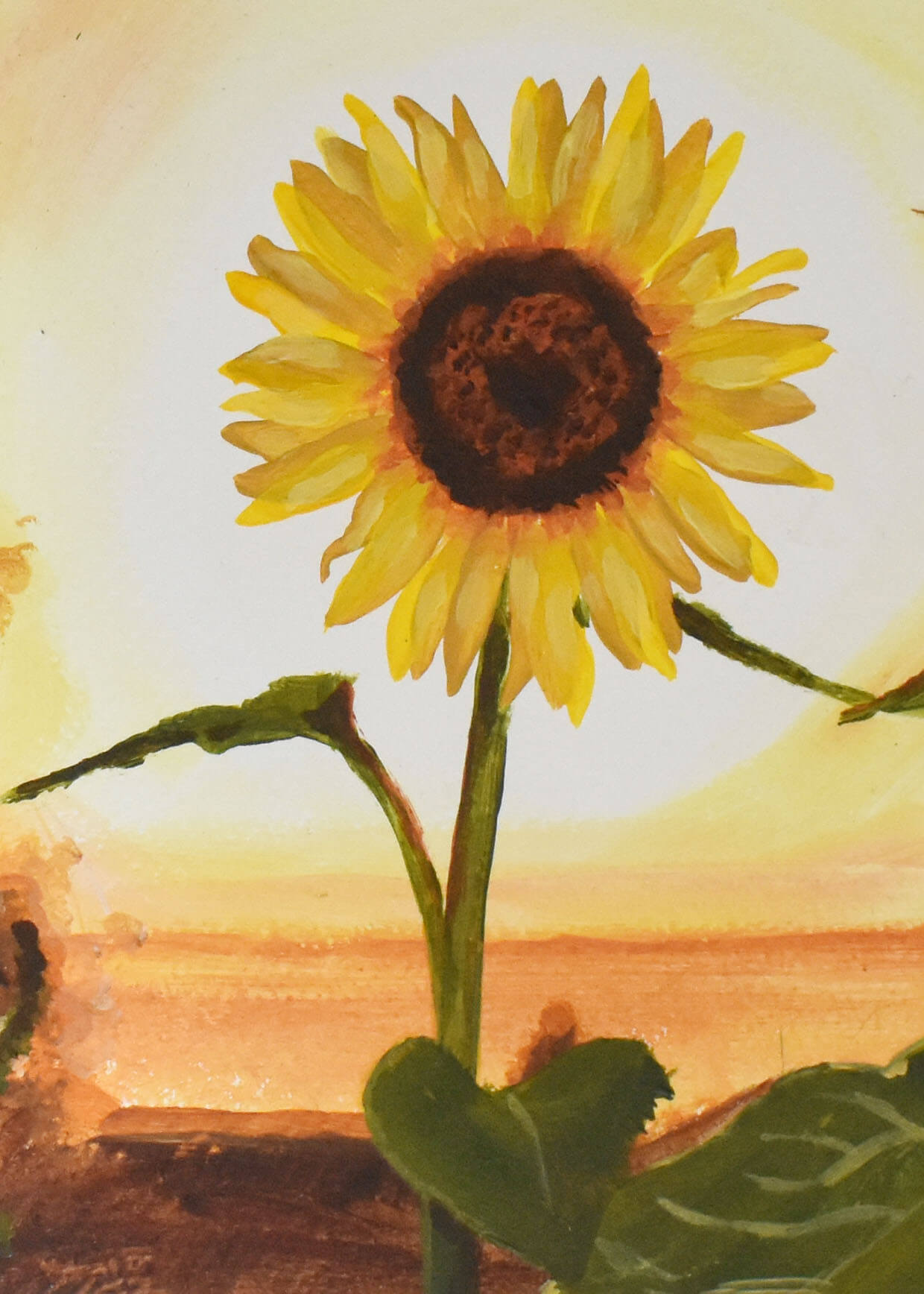An acrylic sunflower painting is a lovely way to catch that end-of-summer feeling on paper. Acrylics are a great choice for sunflowers – their vibrancy makes them perfect for capturing the warm, bright tones of a cheerful, summery plant like a sunflower.
This tutorial on how to paint a sunflower will take you through some tips and techniques on using acrylics, as well as the materials you’ll need to get started, before taking you through the simple steps to create a beautiful acrylic sunflower painting.
For this painting, I’ve chosen to use a loose, expressive style. I like this for sunflowers, probably because when I think of painting sunflowers I instantly think of Van Gogh! But the other advantage of painting in a looser style is that it’s a simpler process to follow – making acrylic sunflower painting easy.
A few tips to make sunflower painting easy
Before you start your acrylic sunflower painting, here are a few tips you might want to bear in mind:
- Be aware that acrylics dry fast. This can make them challenging to work with! But it also means that you can finish a painting more quickly than when working with something like oils, and I personally find them a little easier to layer than watercolours.
- Work from back to front. Start painting whatever is farthest away in your reference photo, and slowly work towards what’s closest to you – as you layer up paint, this will give your painting more depth. In this painting, this means I start by painting the background before starting on the sunflower itself.
- Cheat at blending. Acrylics can be tricky to blend. If you’re going for a more expressive look (like in this painting), you can make things easier for yourself by adding an additional layer of paint between the two colours you’re trying to blend. Just mix the two colours together on your palette and add this where the two meet on your canvas. You’ll see how I do this when it comes to blending orange into yellow around the centre of the sunflower.
- Have water on hand. This will let you dampen your brush, clean brushes before using a different colour (less important when you’re blending similar colours, more so when you’re moving to a whole new part of the painting!), and thin the paint if you need to paint on very precise lines – like I did in the stalk to the left of the painting.
Art materials for your acrylic sunflower painting
In order to create your sunflower acrylic painting, you’ll need the following materials:
Acrylic paints
I use a Liquitex Basics acrylic set as I find these to be an affordable, good-quality option. I do find the paint a little on the thin side, so just be prepared to paint on more layers when using these paints. I also always have a bigger tube of white paint as I use this most often – at the moment I’m using the Cass Art own brand paint. If you're looking for more acrylic paints to buy, check out our pick of the best acrylic paint sets.
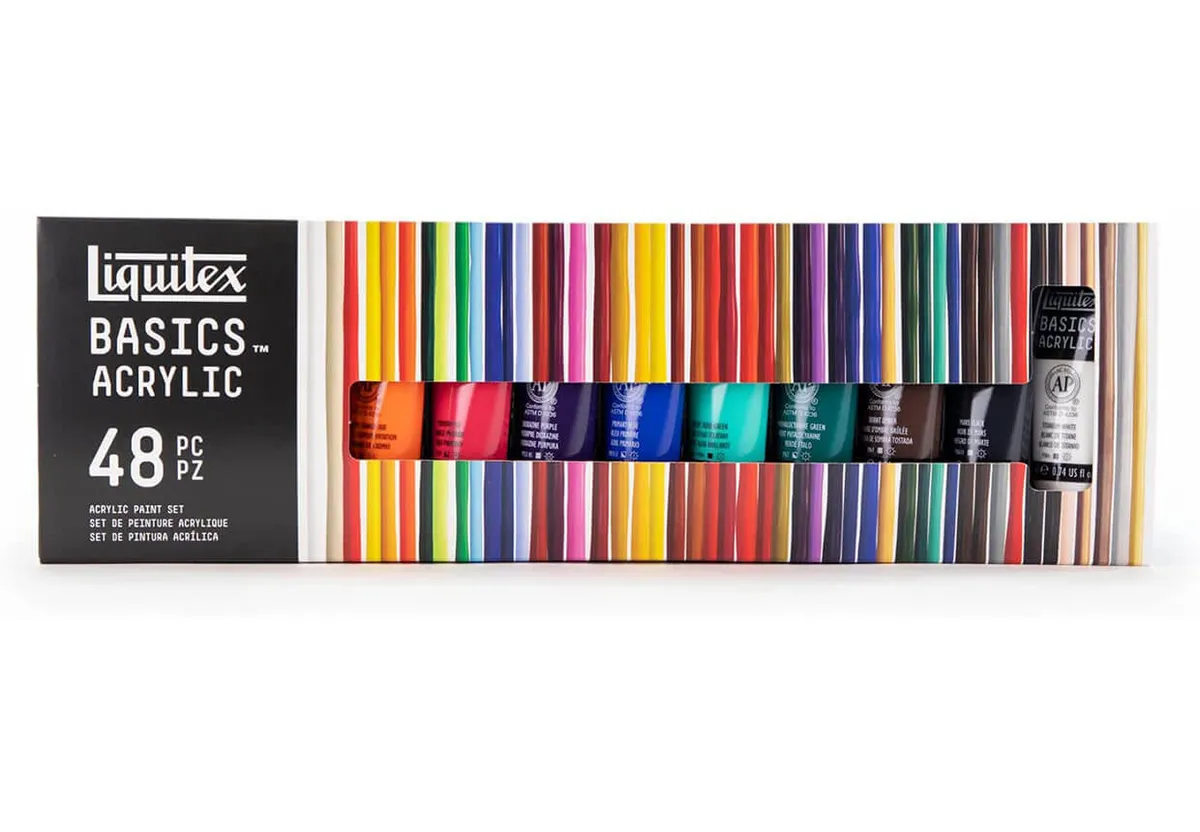
Paintbrushes
I like to have brushes with a range of shapes to the tips to make painting easier – you can use these to create interesting marks with your paints using just one stroke. I used a large brush which tapered to a fine point to do this here, when I painted the sunflower petals. Try this Daler Rowney brush set to get started! Take a look at our best paintbrushes for artists for more recommendations.
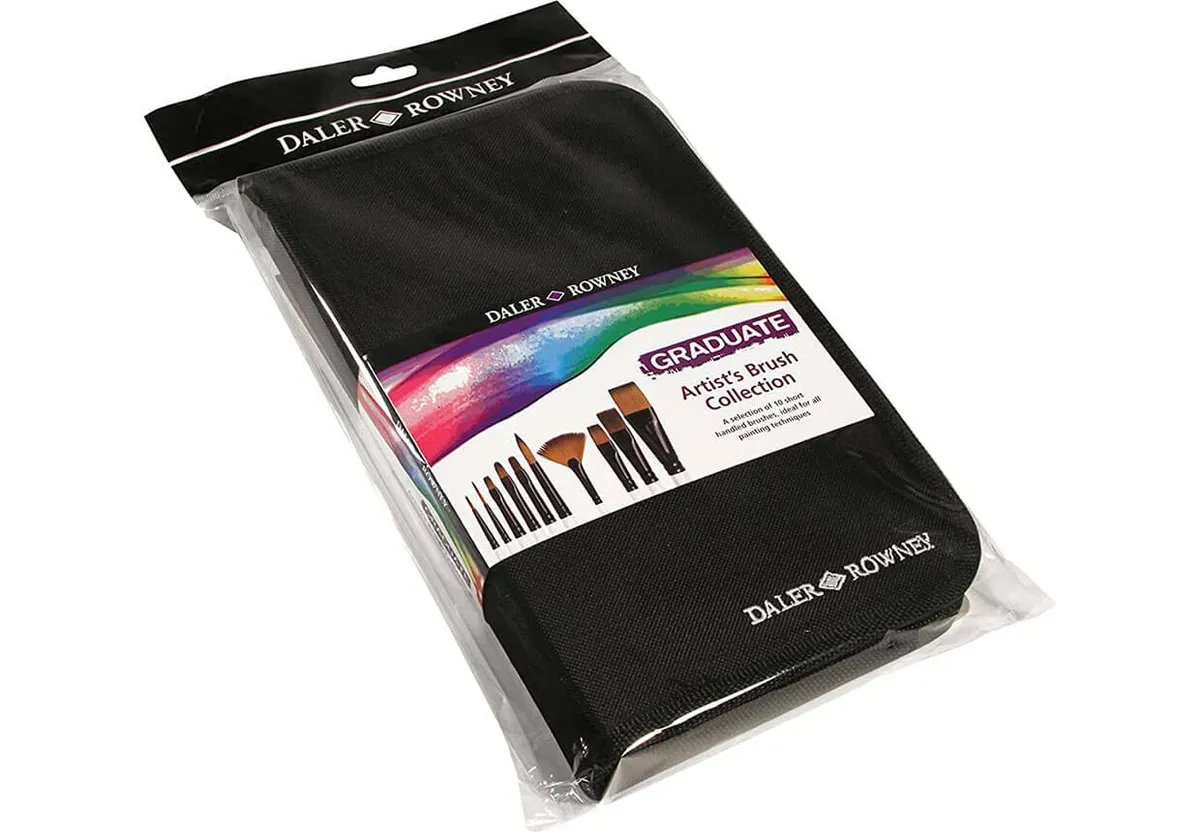
Canvas or paper
Think about what you’re going to do with your finished acrylic sunflower painting before deciding whether to paint on canvas or paper. If opting for paper – like I did in this painting – just make sure you choose a really heavy paperstock (300gsm or higher) or a paper pad that mentions it’s intended for use with acrylic paint. I’m using paper from Cass Art, because I find it does a good job of not buckling when it gets wet.

You can find a full list of supplies below. Read on to find out how to create your own beautiful sunflower painting…
Looking for more painting projects to try? Learn how to paint a portrait, how to paint a landscape or have a go at palette knife painting.



